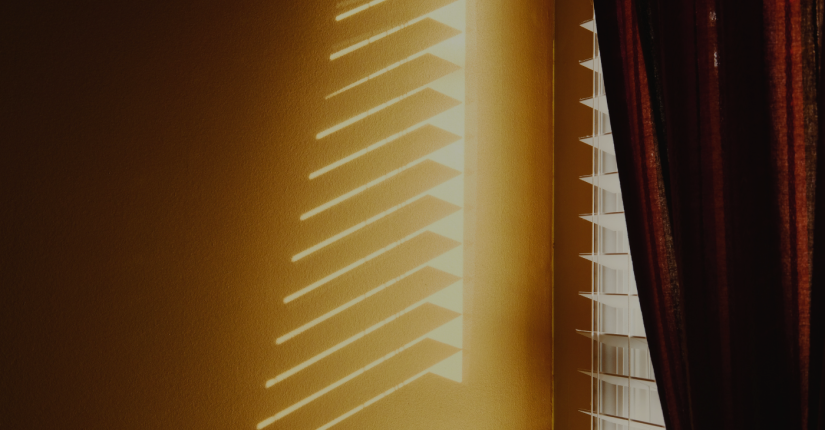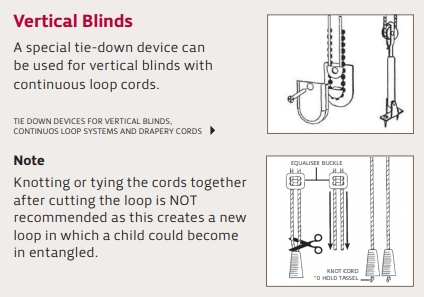The home can harbour many dangers for children but not many people realise that window blind and curtain cords can be dangerous or even fatal for babies and young children – particularly for those under the age of 3.
Children can injure, or even strangle themselves on window blind and curtain cords. When exploring or playing a child can become entangled in hanging cords. If the child then tries to sit or falls down, they can hang themselves in the loop. The cord or chain loop used to open and close vertical blinds can also strangle children.
There have been a number of such incidents publicised worldwide. So how do you avoid such dangers?
There are several simple steps you can take to minimise this risk – and help keep your child safe.
Download our information pamphlet, or continue reading below.
Existing curtains and blinds
You can retro-fit your old blinds to make them safe in your home by following these steps:
• Cords ending in a loop are particularly risky. Cut the cord to get rid of the loop and install tassels.
• Cords should end at least 1.6 metres above the ground so children cannot reach them. Replace cords with curtain or blind wands.
• Where cords cannot be cut a tie down or tension device can be used to pull the cord tight and secure it to the floor or wall.
• Never put a cot, bed, high chair or playpen near a window or patio door where a child can reach a curtain or blind cord.
• Keep sofas, chairs, tables, shelves or bookcases away from windows to prevent children climbing up and reaching curtain or blind cords.
New Blinds and Curtains
The European Standard EN 13120 ‘Internal blinds -Performance requirements including safety’ was revised in 2014 n order to incorporate stricter safety controls.
• Ask your supplier when buying blinds if the blind has been manufactured in accordance with the standard.
• A warning notice should be on the blind.
• A device for keeping cords, chains, tape or similar out of the reach of children should be provided with the blind or the product should be designed in such a way as to achieve the same result. Ask the supplier for a demonstration on the product’s safe use.
• Parents/Guardians should follow the precautions mentioned above for existing blinds and always ensure that cords are out of the reach of children and be aware that children can climb onto furniture and play with blind and curtain cords.
Making your curtains and blinds safe is cheap and easy.
Inner Cords
Inner cords on horizontal blinds can form a loop that can hang infants and toddlers. Most modern blinds have attachments or inter-looping stitched cords so that inner cords can’t form
a loop if pulled by a young child. You can check your blinds by gently pulling on the inner cords of the blind to see how much slack is created or what sized loop is formed. If you are concerned you should contact your manufacturer or supplier.
European standards
The three European standards covering window blinds are:
‘Internal blinds – Performance requirements including safety’, EN 13120:2009+A1:2014: This standard specifies the requirements that internal blinds should fulfil when they are fitted to a building. The amendment expands the scope to cover many types of blinds, while expanding the clause on ‘protection from strangulation; to address specific hazards posed by cords.
'Internal blinds – Protection from strangulation hazards – Test methods’ EN 16433:2014 , this standard specifies test methods which can be used to verify that a window blind conforms to the requirements relating to protection from strangulation; as specified in EN 13120.
‘Internal blinds – protection from strangulation hazards – Requirements and Test methods for safety devices’, EN 16434:2014. This standard specifies the safety requirements for test methods for safety devices that can help to improve the safety of window blinds and prevent accidents. These safety devices can be fitted to window blinds during the manufacturing process or alternatively fitted to window blinds that have already been installed.
These standards are available on www.standards.ie




